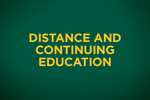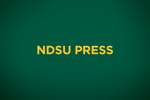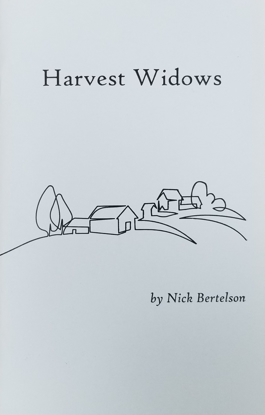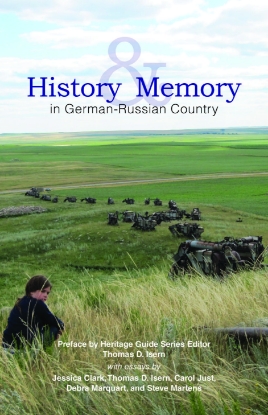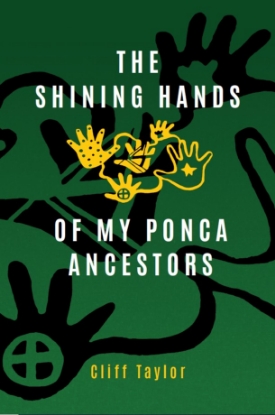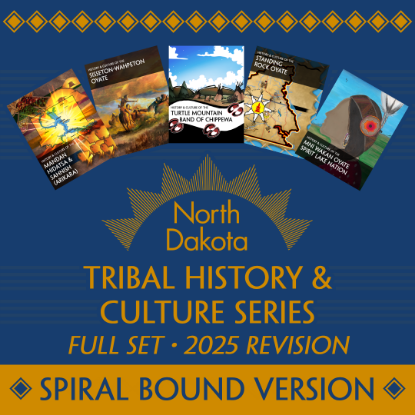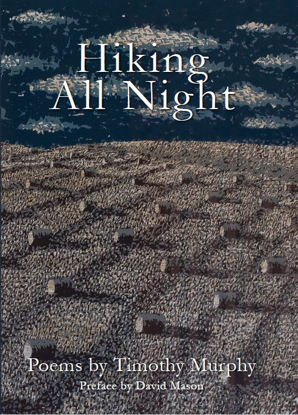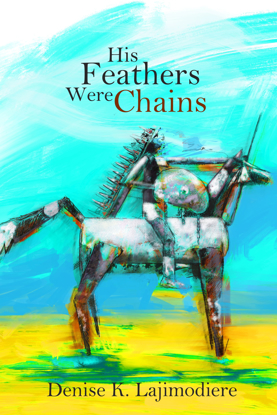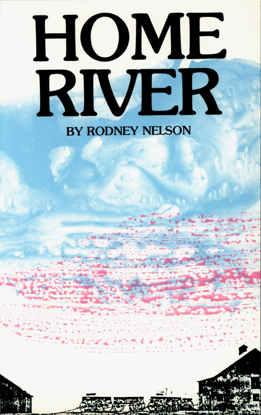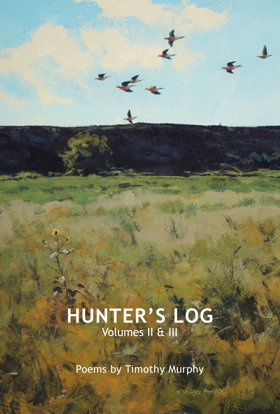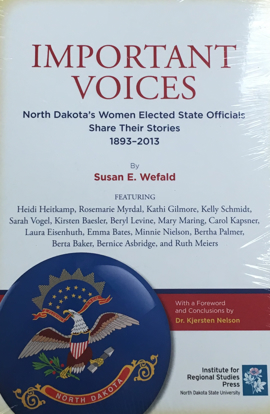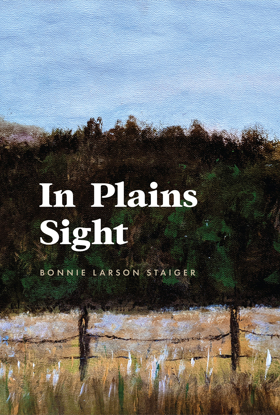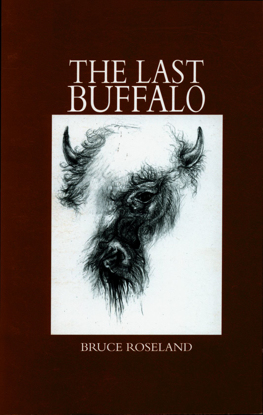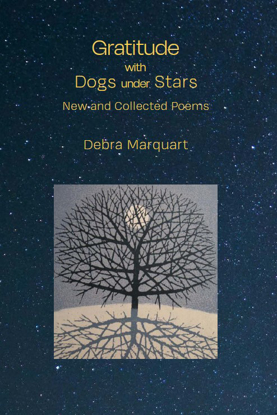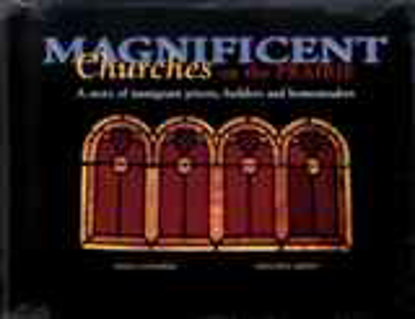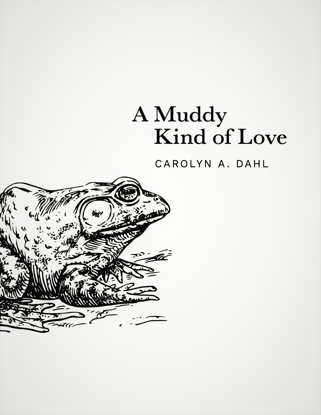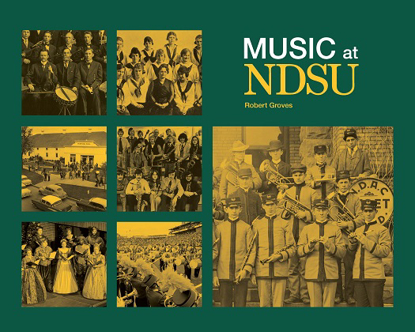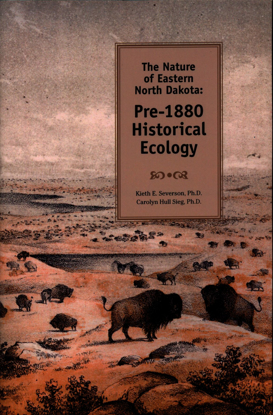All Books
Harvest Widows
"Unflinching, attentive, both reverential and honest, the poems in Nick Bertelson's Harvest Widows address what it is to be midwestern."--James McKean, author of Headlong, Tree of Heaven, and We Are the Bus
Nick Bertelson is a fourth-generation farmer from southwestern Iowa. His poetry has appeared in Coe Review, Valley Voices, Prairie Fire, and North American Review, as a James Hearst Poetry Prize finalist.
Harvest Widows is the second chapbook to be published as NDSU Press’s annual Poetry of the Plains and Prairies Award, and the fourth chapbook to be produced by publishing students on turn-of-the-twentieth-century hand-letterpress equipment.
History & Memory in German-Russian Country
The Germans from Russia—an agricultural people who settled, survived, and prospered—formed strong ethnic communities where farmers still plant and harvest, the faithful still gather for worship, and the cooks still feed their families from the garden. This is a story of German-Russian persistence on the northern plains and its emergent consciousness—a sort of heritage husbandry—in the late twentieth century.
The Shining Hands of My Ponca Ancestors
In sincere, from-the-heart storytelling, The Shining Hands of My Ponca Ancestors depicts the life of a young, contemporary Ponca, who—with the help of friends, relatives, spirits, and ancestors—is learning what is really possible for him and his tribe and how dramatically different that is from the dominant cultural messaging of his youth. An account of inspiration, ancestor intervention, the indestructible Indigenous core of his Native people, and the immense beauty of an ongoing way of life, Shining Hands is rife with meaning for Native and non-Native readers alike. Viewed through his personal life, Shining Hands is a prayer for the young that they may see their own powerful potential, too.
Tribal History & Culture Series Paperback Set
The North Dakota Tribal History & Culture book series teaches students about the Indigenous nations that share geography with the state. The goal of the series is for North Dakotans from these nations to explain their cultures in their own words. The books are written by experts, scholars, and Elders from each nation, with review by the North Dakota Tribal College System. The provided content is distributed by the North Dakota Department of Public Instruction, North Dakota State University Press, and North Dakota Tribal College System. The original books were released from 1995-2002, with the current revised edition released in 2026. The books are used in the 8th grade and high school North Dakota Studies classes, as well as in higher education. The revision was prompted by the passage of North Dakota Senate Bill 2304 in 2021, which mandates that all elementary and secondary public and nonpublic schools include Native American history and culture in their curriculums.
The titles in this five-volume set are:
- History & Culture of the Mandan, Hidatsa, & Sahnish (Arikara)
- History & Culture of the Mni Wakan Oyate Spirit Lake Nation
- History & Culture of the Sisseton-Wahpeton Oyate
- History & Culture of the Standing Rock Oyate
- History & Culture of the Turtle Mountain Band of Chippewa
The Sisseton Wahpeton Oyate nation (Dakota: Sisíthuŋwaŋ Waȟpéthuŋwaŋ Oyáte) also shares geography with North Dakota. However, the original four History & Culture books did not include a fifth book for Sisseton Wahpeton because Agency Village, its capitol, is outside the state. In North Dakota, the general vicinity around the Lake Traverse Indian Reservation is referred to as "South Dakota."
Printing for this project takes place at the United Tribes Technical College (spiral bound) and Sisseton-Wahpeton Oyate College (paperback).
Tribal History & Culture Series Spiral-bound Set
AVAILABLE NOW FOR PRESALE TO TAX EXEMPT CUSTOMERS ONLY.
Our copyeditors, designers, and marketing teams are working with this project during our summer 2025 season with an anticipated late fall 2025 to early spring 2026 delivery date. We are happy to take presale orders in the meantime, and we will fill your order as soon as copies are available. At this time, the textbooks are available only as complete sets.
The North Dakota Tribal History & Culture book series teaches students about the Indigenous nations that share geography with the state. The goal of the series is for North Dakotans from these nations to explain their cultures in their own words. The books are written by experts, scholars, and Elders from each nation, with review by the North Dakota Tribal College System. The provided content is distributed by the North Dakota Department of Public Instruction, North Dakota State University Press, and North Dakota Tribal College System. The original books were released from 1995-2002, with the current revised edition released in 2026. The books are used in the 8th grade and high school North Dakota Studies classes, as well as in higher education. The revision was prompted by the passage of North Dakota Senate Bill 2304 in 2021, which mandates that all elementary and secondary public and nonpublic schools include Native American history and culture in their curriculums.
The titles in this five-volume set are:
- History & Culture of the Mandan, Hidatsa, & Sahnish (Arikara)
- History & Culture of the Mni Wakan Oyate Spirit Lake Nation
- History & Culture of the Sisseton-Wahpeton Oyate
- History & Culture of the Standing Rock Oyate
- History & Culture of the Turtle Mountain Band of Chippewa
The Sisseton Wahpeton Oyate nation (Dakota: Sisíthuŋwaŋ Waȟpéthuŋwaŋ Oyáte) also shares geography with North Dakota. However, the original four History & Culture books did not include a fifth book for Sisseton Wahpeton because Agency Village, its capitol, is outside the state. In North Dakota, the general vicinity around the Lake Traverse Indian Reservation is referred to as "South Dakota."
Printing for this project takes place at the United Tribes Technical College (spiral bound) and Sisseton-Wahpeton Oyate College (paperback).
Hiking All Night
At a relentless pace, Timothy Iver Murphy (1951–2018) produced an incredible amount of poetry in the last years of his life. A sample of his brilliant work is included in this posthumously published collection.
Hiking All Night is an account of the simple pleasures of Murphy’s life: hunting, companionship of faithful dogs, farming, and hiking — a lifelong habit carried over from his training as an Eagle Scout and member of the Order of the Arrow. Murphy extends his reach beyond his native region of the northern plains, across the United States and as far as the Himalayan Mountains. Throughout Hiking All Night, familiar inspirations appear, including homage to the masters of literature who have formed his craft and the religious beliefs that anchored his life. Most poignantly, Murphy includes relationships with friends and family, the physical and emotional struggles of this mortal world, and reflections upon regrets and restoration.
hardcover/373 pages/3 color inserts
Preface by former Colorado Poet Laureate David Mason
Hiking All Night is Timothy Murphy's penultimate collection of poetry. Forthcoming in summer 2021, NDSU Press will publish Last Poems, written by Murphy during the final months of his life.
His Feathers Were Chains
Lajimodiere’s newest collection of poetry takes its title from a statue the author observed--an Indian on a horse--fashioned from welded-together farm implements. The premise of the collection is overt criticism of settler society, but the poetry is subtle, approachable, and grounded in Ojibwe knowledge and customs. Feathers is divided into five sections: Broken Glass Dreams, Identity, His Feathers Were Chains, Thin White Heat, and Dancing with a Whirlwind.
Home River
Although Home River is a work of fiction, readers should not underestimate the great amount of historicity therein. Rodney Nelson has captured in carefully honed language the distinctive lilt of Norwegian-American dialect and the political and social atmosphere of the Red River Valley of the North in the middle 1940s. By imagining one small episode from that era, he achieves an authenticity of voice and color which might not have been possible in a strict recounting or memoir. Rodney Nelson has studied the valley for most of his life; his novels, stories and books of poems reflect his clear-eyed, unsentimental love for this rich land and difficult climate, and for the equally complex people who chose to settle the area, his grandparents among them. Home River is first of all a work of fiction whose intent is simply to please-but one of the many other things the book does is to help us preserve our knowledge of the immigrant pioneering spirit as manifested in the settlers of the Red River Valley and their children.
Hunter's Log: Volumes II & III
In Hunter’s Log: Volumes II & III, you’ll find Tim’s love for all the rites and tribulations of rising at O Dark Thirty, God O'clock to take his dogs out for training or hunting and for days that conclude with a pheasant gumbo steaming on the stove.
“Murphy is not just our best hunting poet . . . he is also our bard of all things North, with the blood of the Irish and Vikings in his veins. . . . No one can write better about the chill that always lurks in the northern breeze even on summer evenings, or the knowledge of mortality seasoned in the present even in the best of days. These volumes are full of the rueful mortal comedy of a man who has seen friends and dogs die and knows he is not immune.” Timothy Murphy’s “hunting, as it should, has given him the eye of a painter and a botanist’s knowledge welded seamlessly together by the ear of a poet.” —Stephen Bodio, book editor for
Gray’s Sporting Journal, author of eleven books, including A Rage for Falcons: An Alliance between Man and Bird
“Murphy, a poet, was perhaps the best known literary figure living in North Dakota.”
—Mike Jacobs, former editor and publisher of Grand Forks Herald
Important Voices-North Dakota's Women Elected State Officials Share Their Stories 1893-2013
Only 17 women have been elected to statewide office in North Dakota in 125 years! Read their stories in this book. Laura Eisenhuth, elected Superintendent of Public Instruction in 1893 (and the first woman in the United States to be elected to statewide office); Agriculture Commissioner Sarah Vogel, first woman to serve on the powerful North Dakota Industrial Commission and who teamed up with Willie Nelson to provide help to farmers; Superintendent of Public Instruction Minnie Nielson who was not allowed into her office for a week after her inauguration; Senator Heidi Heitkamp, who raised her family while serving as tax commissioner and attorney general,all the time working on important issues for North Dakotans. Susan Wefald has pulled the stories of these fabulous women together into this one volume. IMPORTANT VOICES shares their triumphs and losses, their hopes and challenges. It shares what these North Dakota women have accomplished and the challenges still facing women who want to be elected to statewide office today. It is a "must read" for anyone who enjoys North Dakota history, real life politics, or learning how women for over one hundred years have served our state.
ISBN - 978-0-911042-79-5
Copyright 2014
358 pages
Softcover
In Plains Sight
In a rich yet often austere setting of the Great Plains, Bonnie Larson Staiger's second poetry collection--In Plains Sight--brings those realities into full view through the lens of the prairie ethos. In moments when the natural world confounds the objective and logical world, she brings us into an encounter with a coyote, a sub-zero walk after a blizzard, or a humorous swipe at a fast-food restaurant. Paperback with French flaps.
Last Buffalo, The
Contemporary poetry from the farms and ranches of the Dakotas. Striking insights into 21st Century rural life.
By: Bruce Roseland.
Gratitude with Dogs under Stars
Gratitude with Dogs under Starsfeatures selections from Debra Marquart’s three collections of lyric poetry (Small Buried Things, New Rivers Press 2015; From Sweetness, Pearl Editions 2001; and Everything’s a Verb, New Rivers Press 1995) and adds twenty-one new poems to round out the experience. Beginning with the new poems, the collection travels back through Marquart’s illustrious career. Long-time fans and newcomers alike can track the trajectory of this poet laureate’s poetic life thus far—the quiet serenity of walking dogs under a starry sky, the horrors of fracking, the beginnings of a tender relationship at a firing range, reflecting on the follies of a youthful life lived carefree.
Debra Marquart is Distinguished Professor of Liberal Arts & Sciences and teaches in the MFA Program in Creative Writing and Environment at Iowa State University, as well as the Stonecoast Low-Residency MFA Program at University of Southern Maine. Marquart serves as Iowa’s Poet Laureate and the Senior Editor of Flyway: Journal of Writing & Environment. The author of seven books—including the memoirs The Horizontal World: Growing Up Wild in the Middle of Nowhere (Counterpoint 2007) and The Night We Landed on the Moon (North Dakota State University Press 2021)—Marquart has been featured on NPR and the BBC and has received over 50 grants and awards including an NEA Fellowship, a PEN USA Award, a New York Times Editors’ Choice commendation, and Elle Magazine’s Elle Lettres Award. In 2021, Marquart was awarded a Poets Laureate Fellowship from the Academy of American Poets. For more information: debramarquart.com
Paperback, 278 pp
BISAC:
- POE024000 Poetry / Women Authors
- POE023040 Poetry / Subjects & Themes / Places
- POE023050 Poetry / Subjects & Themes / Family
- POE005010 Poetry / American / General
Last Poems
Last Poems, by Timothy Murphy
As described by the collection editor, poet and translator Catherine Chandler, Last Poems is a veritable journal intime, albeit one that Timothy Murphy wished to share with his readers. In his unmistakable voice, and often in stark language almost too painful to read, Tim chronicles his physical, spiritual, and emotional life during his final months, beginning on the day of his cancer diagnosis in early January 2018, through his various treatments, and ultimately his decision to withdraw from clinical trials. . . . Let [Last Poems] be my Last Will and Testament, Murphy writes in "Envoi." And so it is. Last Poems bears witness—with grace, grit, and gratitude—to the life and loves of this major North American poet. Hardcover.
Magnificent Churches
A story of pioneer optimism, abiding faith and people who longed for the kind of community they had left behind in Europe. At the turn of the century, Benedictine missionaries and homesteading immigrants still living in earthen dwellings collaborated to build awe-inspiring churches of stone and stained glass. Churches at Mandan, Devils Lake, Richardton, and Strasburg, ND and Hoven, SD are presented in detail. More than one hundred color photographs capture the magnificence of these five churches.
By: J. Coomber and Sheldon Green.
The Mammals of North Dakota, 2nd Edition
The Mammals of North Dakota, Second Edition, documents eighty-eight mammal species with full-color photos, text, and maps. Identification includes common, scientific, and known Native American names. This new edition of The Mammals of North Dakota features an increased number of recorded species since the First Edition, as well as significant shifts in distribution across the state—such as moves made by the opossum and the spotted skunk.
Chapters include information on species descriptions, habitat, ecology and behavior, reproduction, status, conservation, and taxonomic keys for species identification. Introductory chapters define the mammalian biogeography of the state, the mammalian paleofauna of North Dakota (by John Hoganson), and the principal habitats of North Dakota (by Bill Jensen).
Moment with Strangers
A Moment with Strangers embraces the brief encounter, sometimes with other people, sometimes with landscape, weather, or history. Cost is $19.95.
Muddy Kind of Love, A
A young girl dreams of becoming a circus performer and riding pink elephants in a sequined gown. A young boy hopes to use magic, a divining rod, to find his grandfather's trunk of gold buried on their land, so family stories say. But their exotic dreams eventually turn into the simpler life of farmers, though their simple life is never simple.
Their many stories are told in poems with achingly powerful expressive language in Carolyn Dahl's chapbook, A Muddy Kind of Love. Hand-letterpress printed, A Muddy Kind of Love is the 2020 Poetry of the Plains & Prairies Award winner.
Music at NDSU
Dr. Robert Groves combines thorough research with personal insights for an engaging record of the rise of music as a field of study at NDSU. From its beginnings with mid-1890s campus music clubs, to the formation in 1903 of an official Department of Music, up to the designation of the School of Music in 2012 and beyond, Groves brings the history of the Challey School of Music to life. Featuring more than 200 photos capturing the past century of student musicians and faculty, Music at NDSU is filled with historical high notes sure to resonate with readers. Paperback.
2018 Midwest Book Awards finalist for Arts/Photography/Coffee Table Books
Nature of Eastern North Dakota: Pre-1880 Historical Ecology
This book seeks to develop a deeper understanding of how the geologic setting of eastern North Dakota changed through time, how vegetative communities and associated wildlife responded, and how processes such as climate and fire fluctuated. The authors provide glimpses of natural communities of eastern North Dakota, beginning with the Precambrian Era, about 3.5 million years ago. They explore, in greater detail, how grasslands, herbivores, varying weather patterns, fire and indigenous people have interacted during the last 10,000 years, with most emphasis placed on the last 300 years.
By: Kieth Severson and Carolyn Hull Sieg










